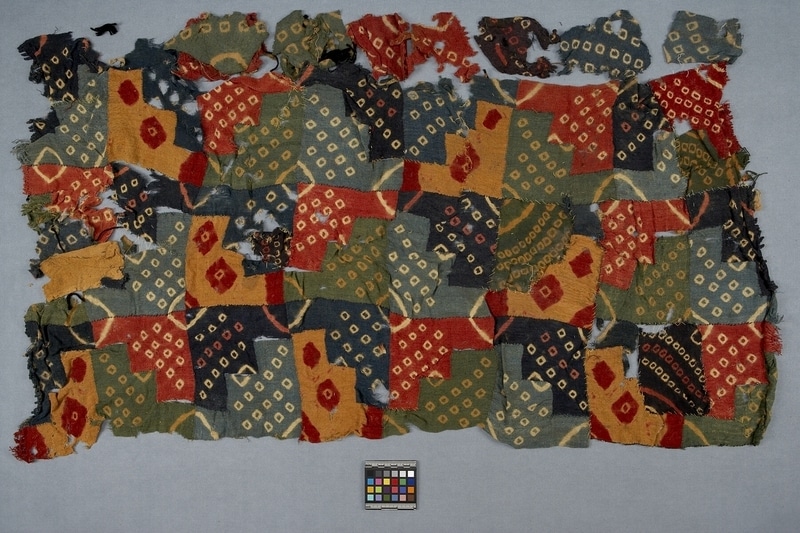Tunic Item Number: Sf808 from the MOA: University of British Columbia

Description
The rectangular textile has many step-triangle patches in red, yellow, dark blue and green sewn together. Most patches have a pattern of light coloured circles and across one end, a diagonal line. The lines in the patches are arranged throughout the textile to form diamond shapes. Other patches have large red diamond shapes with a dot in the centre on a yellow-orange background. The patches are sewn together with a dark blue thread. The textile is approximately one half of a tunic. Z-spun, two ply s.
History Of Use
This is a distinctive tunic type usually associated with Middle Horizon cultures, although an example from Camana has Early Intermediate associations (p.c., A. Sawyer). The tunics are widely distributed and Rowe suggests Huari influence is behind the wide distribution. One such tunic is on an unwound mummy in the Ica Museo, Peru.
Iconographic Meaning
The meaning of the step-triangle and circle in the Middle Horizon is not clear. William Conklin suggests the step-motif on Middle Horizon Huari tapestry tunics means 'mountain' (p.c., Berkeley, 1982).
Item History
What
- Name
- Tunic
- Identification Number
- Sf808
- Type of Item
- tunic
- Material
- alpaca wool fibre ? and dye
- Manufacturing Technique
- woven and resist dyed
- Overall
- height 125.0 cm, width 58.0 cm
Where
- Holding Institution
- MOA: University of British Columbia
- Made in
- Peru
When
- Creation Date
- between 550 and 900
- Collection Date
- between 1949 and 1966
- Ownership Date
- before May 4, 1981
- Acquisition Date
- on May 4, 1981
Other
- Item Classes
- textiles
- Condition
- poor
- Accession Number
- 0711/0310